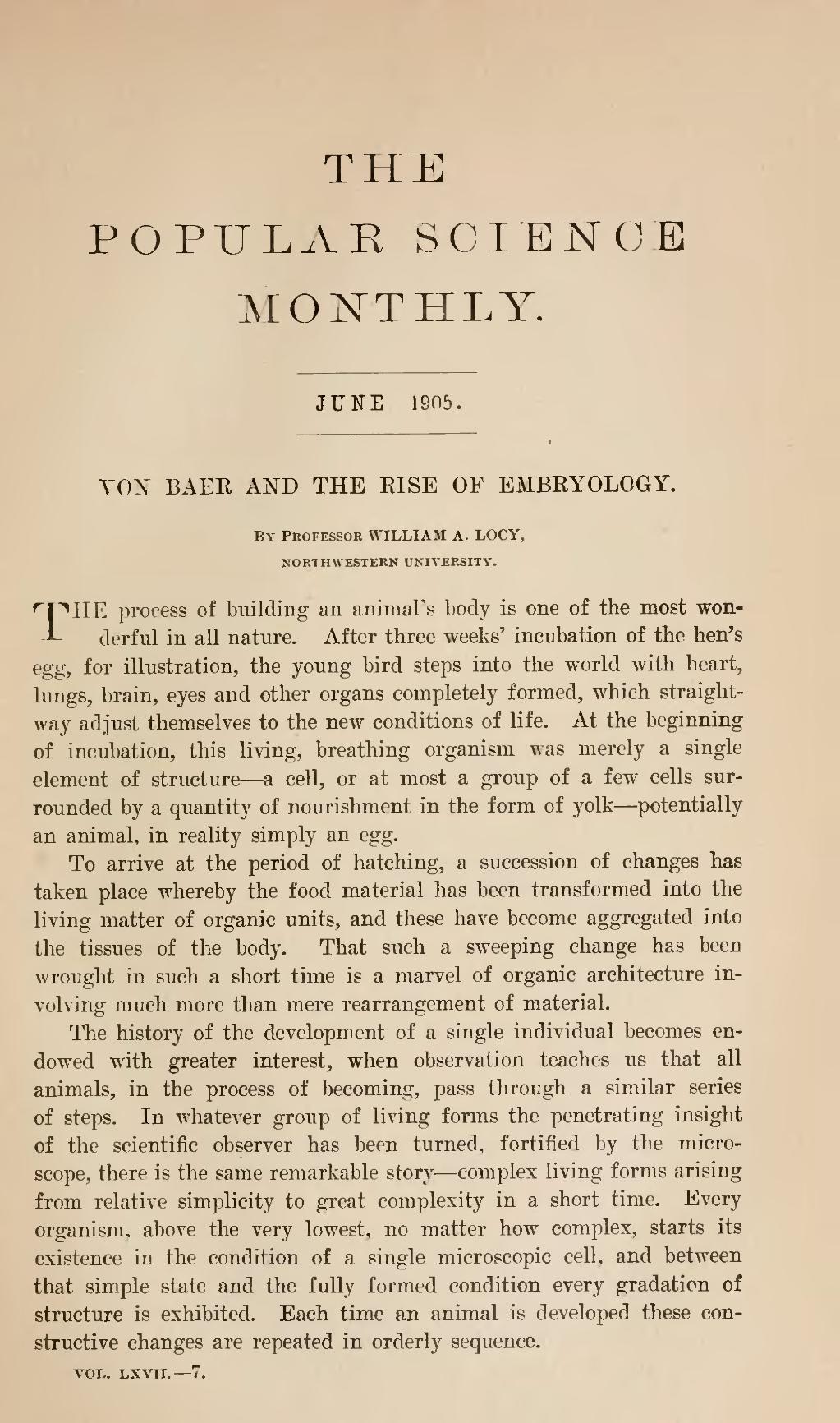THE
POPULAR SCIENCE
MONTHLY
JUNE 1905.
| VON BAER AND THE RISE OF EMBRYOLOGY. |
By Professor WILLIAM A. LOCY,
NORTHWESTERN UNIVERSITY.
THE process of building an animal's body is one of the most wonderful in all nature. After three weeks' incubation of the hen's egg, for illustration, the young bird steps into the world with heart, lungs, brain, eyes and other organs completely formed, which straightway adjust themselves to the new conditions of life. At the beginning of incubation, this living, breathing organism was merely a single element of structure—a cell, or at most a group of a few cells surrounded by a quantity of nourishment in the form of yolk—potentially an animal, in reality simply an egg.
To arrive at the period of hatching, a succession of changes has taken place whereby the food material has been transformed into the living matter of organic units, and these have become aggregated into the tissues of the body. That such a sweeping change has been wrought in such a short time is a marvel of organic architecture involving much more than mere rearrangement of material.
The history of the development of a single individual becomes endowed with greater interest, when observation teaches us that all animals, in the process of becoming, pass through a similar series of steps. In whatever group of living forms the penetrating insight of the scientific observer has been turned, fortified by the microscope, there is the same remarkable story—complex living forms arising from relative simplicity to great complexity in a short time. Every organism, above the very lowest, no matter how complex, starts its existence in the condition of a single microscopic cell, and between that simple state and the fully formed condition every gradation of structure is exhibited. Each time an animal is developed these constructive changes are repeated in orderly sequence.

